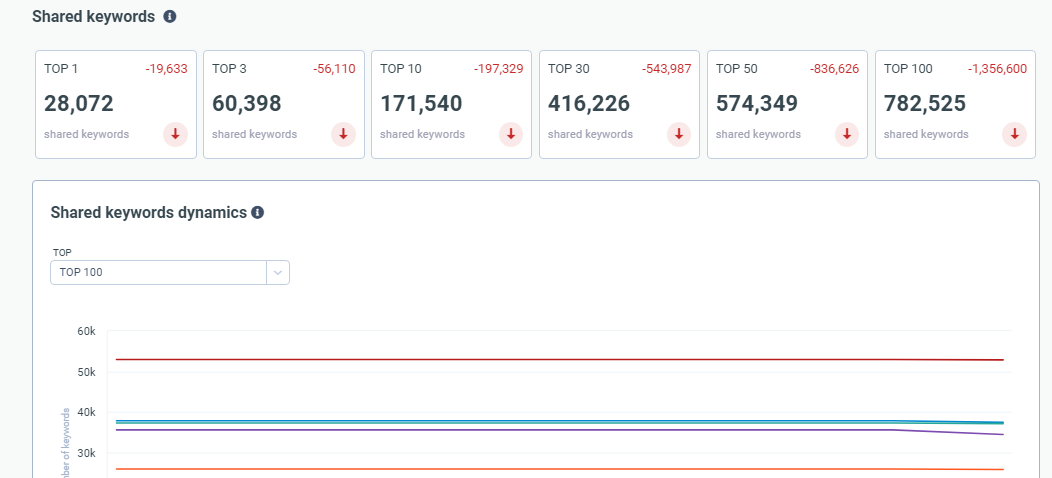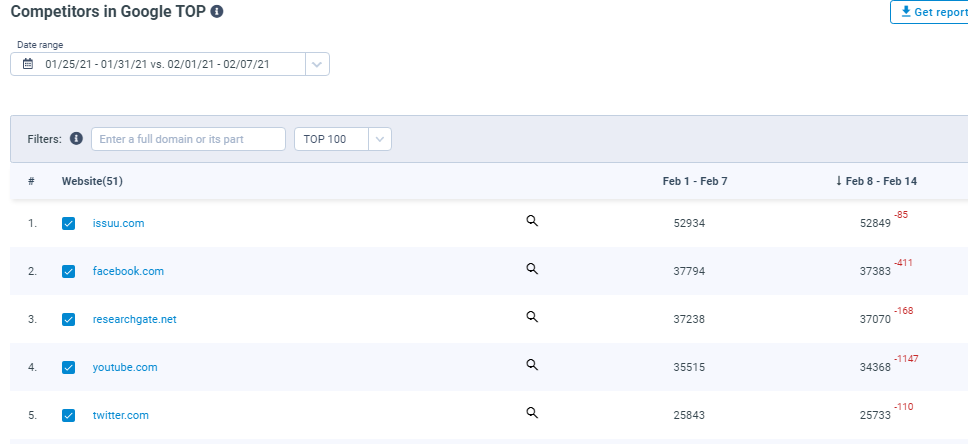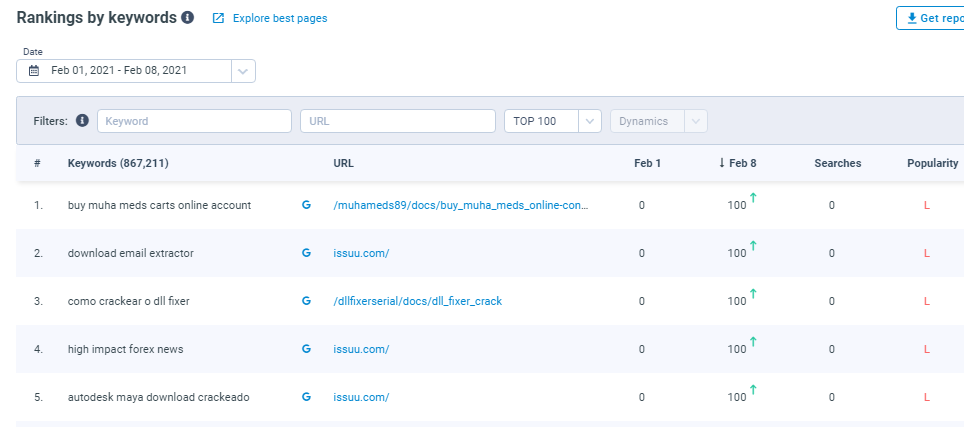How You Can Use Semalt's Competitors Dashboard To Outrank Your Competition

When you look at your available list of keywords and get overwhelmed, that's completely normal. When you add your competitors, the issue becomes a bit more complicated. Regardless of the type of content you write, this is a big part of the battle for traffic. Thankfully, Semalt has offered an analysis tool that provides you an excellent way to track this information.
In this article, we plan on digging into Semalt's competitive analysis tool. We will also get into how you can use that data to further your SEO strategy.
Looking at the Competitors Dashboard From Semalt
Much like the other two options in the SERP section, the Competitors area starts with control over your target domain and search engine. Eventually, it leads to shared keywords between the selected competitors, the dynamics between them displayed in a chart, and different potential competitors you can choose.
Let's dig into these sections:
Section 1: Domain and Search Engine

Much like the "Keywords in TOP" section and the "Best pages" chart, the "Competitors" section allows you to control two specific areas:
- Domain: You can have multiple websites to be tracked via Semalt.net. You can select (or find) different SEO competitors per personal domain. This control is perfect for people who manage a large variety of sites.
- Search Engine: This drop-down menu allows you to control switching between the international and regional areas of Google. This drop-down is perfect for webmasters who work internationally.
This section provides you the basis from which to run a comparison with your competition. By clicking "Apply," you will see a comparison between shared keywords.
Section Two: Shared Keywords & Dynamics

The shared keywords section is your ultimate tool in SEO competitor analysis. This big picture look allows you to see other domains that may be targeting your keywords. When looking at primary competitors, this is ideal for seeing who is receiving the most overall traffic.
The second half, which indicates dynamics, tells you who is winning for the overall keyword situation. When comparing actual competitors, you may see a bit more fluctuation as both of you target similar areas. In this case, Semalt (by default) includes websites like Research Gate and Facebook.
In the upper-left-hand corner of the dynamics section, you will be able to control who is winning among the top keywords among 1,3, 10, 30, and 100. If you scroll down further, you can select a variety of competitors.
Section Three: Competitors in Google TOP

The last section allows you to control what data appears in the earlier chart. This table contains a list of your competitors and the general keywords that they rank. It has a few essential sections to draw attention to:
- Date range: It allows you to control the dates you want to track. This measurement can go back several years, allowing you to see changes over a long time.
- Domain: It allows you to enter your competitor's domain.
- The TOP drop-down menu: It allows you to control the keywords tracked among your competitors. It will tell you how they have moved up or down between different date ranges among keywords in your chosen limits.
For a closer look at the keywords that they rank for, click on the magnifying glass. Clicking on it will reveal the keywords where they rank.
For example, if your competition were issuu.com, you would see the following:

Absorbing this information may allow you to see specific keywords that you could potentially outrank them in. This data can be a significant part of your SEO strategy.
Five Ways You Can Use Semalt's Competition Dashboard To Outrank The Competition

- A frank discussion about who your competitors are.
- Consider how you can outperform their keywords in your content strategy.
- Consider keywords that they might be missing.
- Allows you to ask how you can improve upon their strategy.
- It allows you to gain support from Semalt's platform to acquire an expert perspective.
Finding Who Your Competitors Are
Based on your website's style, you may be surprised what an SEO competitor analysis can provide. Many people establish new competitors from this, finding others who rank for searches you may want to acquire.
The first part of any competitor analysis is finding who your competition is. While it may be evident with product-specific companies, adjacent companies may seek to hit the same rankings as you. Through in-depth analysis and Semalt's system, you may find a list of SEO competitors you aren't fully aware of having.
Finding the Keywords You Can Target To Outperform
The ultimate goal of keyword research (after finding your competitors) is to find the keywords that result in your competitors' success. Your goal is to target those keywords and collect the right backlinks and organic traffic.
A significant question you must ask yourself comes from how you can improve upon those relevant keywords. If it comes from a content marketing strategy, you might produce a better blog on the topic. You may also develop adjacent target keywords that may help grow your overall strategy.
Consider Keywords They Might Be Missing
Your keyword research process should consider relevant keywords that do not have as much emphasis. Given the ever-changing SEO environment, the volume for lower-ranking keywords can change over time. Consider types of keywords that make sense for your business but don't receive attention.
This analysis may require some detailed discussion, as other businesses have also had this discussion. With enough in-depth research, your domain authority can go up as you cast a wide net. That wide net should contain things that are usually part of these keyword targets and others that are not.
This focus may change dramatically depending on your target niche. Your niche, which is your business's focus, may not have a lot of apparent keywords. That is why you must think from the perspective of the consumer.
What would your customer search if they were in an issue that your product can solve? By answering that question, you direct them to the solution related to your business.
Thinking About How You Can Improve Upon Their Strategy
Part of taking the opportunity to improve your business comes from seeing what your direct competitors are doing. While you clearly can't duplicate their strategy, your job is to see where they can improve. When you ask yourself that question and apply it to your own company, you increase your growth potential.
For example, they may be forgetting to focus on an important topic in the niche. In your content marketing focus, you decide to write on that underserved topic. While your competitors will eventually catch up, there will be a period where you will draw this audience.
For example, someone running a website on an HVAC niche may not have a very detailed article on the cost-breakdown of parts replacement. In writing that article, your site may be able to take advantage of the lack of detail compared to other writers. Addressing topic gaps is a great way to address this issue.
Even if this isn't devoted to expanding your blog content, you may be able to produce a new product page. Looking at gaps is another significant part of competitive analysis.
Reach Out To Semalt For An Expert Perspective
While there is a plethora of actionable data that you can use to improve your targets, Semalt provides an expert perspective with consultants who can help you out. Taking an outside view gives you a couple of different advantages:
First, it is natural to gain bias when you work from within your company. You may be prone to missing areas of your site you wouldn't usually look at with that bias. With an outside perspective, they may be able to provide a solution that you usually wouldn't be able to do yourself.
Second, no business can provide all of its solutions. It is crucial to understand when outside influences will be more efficient and capable than yourself. Semalt has been working to improve the website's SEO focus for a long time. Given their experience and the ability to see results right away, you can outperform the competition.
Why Is Competitor Analysis Important?
You might feel like you can focus on the quality of your efforts to provide competition. Many people believe that by focusing on delivering a quality product and service, word-of-mouth advertising will take care of everything else. But this analysis is at the core of our potential improvements.
By comparing ourselves to our competition, we are continually putting ourselves in a position to ask how we can do better. Whether that topic is SEO, backlinks, or the quality of products and services, you can't afford to look away from your competition.
Final Thoughts
Semalt's competitor's dashboard provides you an inside look to see how your website ranks compared to other people. When it comes to SEO, the importance of being discovered organically is a vital sign that your efforts are working. With enough time and the establishment of an SEO campaign from Semalt, you will see your website grow.
Competition is at the center of what we do. If you don't strive to be better than businesses that do the same thing, they will overtake you. Instead, inspire yourself to utilize the data and take advantage of all potential competitive benefits.